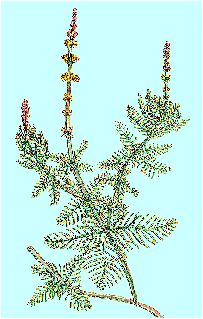Please obtain a javaScript capable browser such as
Netscape Navigator or
Microsoft Internet Explorer
Adaptation to Environment: Lesson
Active transport, activity space,
adaptation ,
ambient, C3 photosynthesis, C4 photosynthesis,
Calvin cycle, CAM, conformer, countercurrent circulation, diffusion,
ectotherms, endotherms, homeothermy, poikilothermic, regulator,
symbiont.
Use the outline below to guide your study of the material in this
lesson. The outline follows the book, but indicates those topics
the instructor feels are most important for you to learn in the
course. You should read all the pages that are assigned, but the
outline will help you focus your study.
Organisms have developed ways to cope with their environments. In
this section, we will look at examples of organisms which have found
ways to be successful in their habitats.
I. Adaptation - meeting challenges
Salt and water balance in plants and animals
Diffusion - the tendency toward equilibrium
Freshwater organisms
Marine organisms
Terrestrial organisms
Nitrogen - protein metablolism
Temperature - anatomy and behavior
Water for plants - pressures (measured in atmospheres)
Photosynthesis - problems of water and temperature
Oxygen
Diffusion: air vs. liquid
Hemoglobin: direction of diffusion depends on relative concentrations
Hemoglobin: different solutions to specific conditions
Countercurrent circulation - blood & environmental fluid (air, water) flow in opposite directions
Anatomy
Prevents equilibrium and maintains a gradient
Soil nutrients
Diffusion (passive) Active transport Root-shoot ratio
Fungal symbionts
Nutrient hoarding
Optimum - range of environmental conditions where the organism is best suited
Example of salt
Example of temperature
Enzymes provide the mechanism II. Homeostasis - staying in balance
Negative feedback - oppose change, return to stable condition
Components: sensor, set point, effector
Temperature - an important determinant of organism function
Cost of endothermy
Newton's law of cooling
Basal metabolic rate
Lower critical temperature
Adaptations: countercurrent heat exchange; torpor
Partial homeothermy - a compromise
Activity space - microhabitats
Environmental tolerance and examples
Structural responses - trade-offs
Acclimation - short-term
Developmental responses
When you have completed this lesson, go on to Review Questions
William.Gaud@nau.edu Copyright 1999
Northern Arizona University 


 Copyright 1999
Northern Arizona University
Copyright 1999
Northern Arizona University